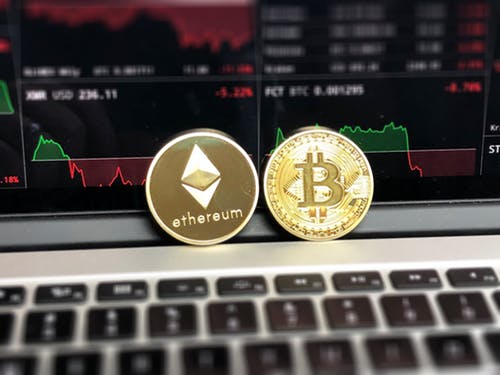A crypto index fund is described as a financial investment tool that enables a specific investor to put funds into a wide range of cryptos. In that context, investors acquire a diversified portfolio by sending their investment into an index pool of funds.
Hence, a crypto index fund is the upgraded version of traditional index funds. These funds offer investors an investment plan that concurrently gives a high return on investment and minimizes the risks of investing in a specific cryptocurrency.
In recent years, the progressive development of crypto has posed a competitive threat to traditional financial systems. The technological infrastructure sidelines the operation of a centralized entity, company, or individual and replaces them with smart contracts. With that in place, the beauty of distributed ledger technology (DLT) is slowly replacing many traditional banking and investment strategies.
Related: How do Distribute Ledger Technology Systems Work?
Despite all that, bonds and stock investors are resentful about the advancement and development of the crypto sector. That is because crypto lacks some of the financial tools available in the financial market.
Since crypto market behaviors have mostly countered most financial laws, theses, and tools, investors have refused to recognize cryptos as legit investments. But, some of these financial tools and laws are becoming dominant in the crypto space. Will the use of crypto index funds bring calamity to the crypto industry? Will it eventually restructure the initial goal of blockchain technology?
Crypto Index Fund Debunked
A crypto index fund is described as a financial investment tool that enables a specific investor to put funds into a huge range of cryptos. Investors are presented with a diversified portfolio by putting their funds into an index pool of funds.
The crypto index fund is defined as the upgraded version of the traditional index fund, which is generally a mutual fund. A traditional index fund is perfectly designed to track the performance and composition of a specific financial market index. Mutual funds enable people to pool their money together into a managed fund, while a market index helps track the performance of a specified number of stocks.
Contrary to the traditional index fund, the crypto index fund does not have any manager. The market indexes represent a segment of the general market, either bonds, stocks, or crypto. For example, the S&P 500, which is an example of a traditional index fund, mainly tracks the market index of 500 big US companies.
How Crypto Index Funds Operate
The functional mechanism of the crypto index fund is not any different from the conventional market index. It offers investors an investment plan that concurrently gives a high return on investment (ROI) and reduces the risk of investing in a specific crypto. A crypto index fund tracks the price, performance, and capitalization of a group of cryptos.
As previously stated, it utilizes an automated indexing procedure to offer crypto behaviors. With this offered data, fund managers can then calculate the performance of any group of cryptos. Using an automated indexing procedure gives no room for any display of human incompetence.
Related: How To Minimize Risks When Investing in Crypto
Crypto enthusiasts can invest in three different cryptos so that when one of the assets fails, the other two can cover up the loss. Tokens of a crypto index fund represent an investor’s share of the total funds. Maintaining the originality of crypto, blockchain-based smart contract servers control index funds.
Impact On The Sector
Introducing the crypto index funds has altered the perspective of investors on crypto. Originally, most investors are afraid of losing their assets to the crypto market’s volatility. In a majority of cases, investors need to analyze deeply and keenly before investing in any crypto. Crypto index funds reduce the fear and stress that is associated with investing by offering diversification.
Another notable impact of the crypto index funds is the attraction of doubtful and newbie investors. Investors can now skip the thorough and tedious pre-investment research by investing in crypto index funds.
The attraction of investors to the financial tool has indirectly grown the popularity of the crypto sector. Since the crypto index debuted in the space, there has been a major spike in the number of institutions offering these types of services.
2022 Annual Crypto Industry Report
2022 proved to be a tumultuous year for users and projects in the Crypto industry. Crypto winter was persistent and the total crypto market cap ended the year at $829 billion as of December 31. It was 64% lower than a year ago.
While DeFi token prices and the demand for nonfungible tokens remain highly suppressed, the builders have continued developing new and innovative protocols, resulting in new trends and narratives over the whole of the past year.
CoinGecko’s comprehensive 2022 Annual Crypto Industry Report covers everything that ranges from the crypto market landscape to analyzing Ethereum and Bitcoin, deep diving into the Non-Fungible Token (NFT) and Decentralized Finance (DeFi) ecosystem and reviewing the decentralized exchanges and centralized exchanges performance.
The key highlights include:
- Stablecoins lost $27.3 billion despite an increased dominance; as BUSD and USDC saw huge gains in market cap.
- The crypto market has been trading sideways after Q2 2022, in the low $1 trillion range and below.
- Major assets performed poorly across the board except for the US Dollar and Crude Oil. Bitcoin lost 64.2%.
- The FTX debacle affected more than 1 million depositors, investors, and creditors.
- Ether staking sees constant quarterly growth to 15.8 million ETH by year-end, pushed by Ethereum upgrades.
- Amid NFT winter, OpenSea’s market share across the top 5 NFT marketplaces dropped to 65.4%, but still dominates in general.
- The market cap of decentralized finance tokens, excluding stablecoins and wrapped tokens, plunged 72.9% and saw derivatives exceed yield aggregators in market share.
- Spot trading volume shrank 67.3% from January 2022, with the biggest quarterly drop of 21.2% in Q4.
With all these market components, crypto index funds come in handy for investors seeking to profit from the volatile crypto market.
Types Of Crypto Index Funds
Two major types of Crypto index funds exist. They include on-chain and off-chain funds. Both give investors access to crypto indices and exchange-traded funds (ETFs). On-chain crypto index funds (also called decentralized crypto index funds) provide investors access to a basket of crypto tokens.
It literally tracks a group of cryptos transacted on the chain. In this strategy, investors can trade and lend out their funds as tokens. On-chain crypto index funds give investors the benefit of purchasing a wide range of tokens for a lesser fee.
This strategy has dominated the decentralized finance (DeFi) space since it is affordable and controlled by smart contracts. Possible investors can buy the funds through DAOs like Indexed Finance, PieDAO, Index Coop, Enzyme Finance, PowerPool, and Bankless DAO.
Related: DAOs Are The Foundation Of The Creator Economy, Web3, And The Future Of Work
On the flip side, the off-chain crypto index fund comes after the precept of traditional index funds that require a centralized intermediary. This centralized body offers custody and manages the portfolio of assets in the pool. Investors can monitor their funds via online brokerage accounts or management companies. The centralized crypto management companies include Vanguard and Fidelity.
Examples Of Crypto Index Funds
Investors are free to select their preferred crypto index fund. There are many examples of crypto index funds, and here are several of them:
- Grayscale Digital Large Cap Fund (GDLC) – Grayscale provides many options for investing in crypto. But, the GDLC is the only diversified strategy of crypto investment, with a huge chunk of pool funds invested in ETH and BTC.
- Bitwise 10 Crypto Index Fund – the crypto index fund provides investment in the top ten cryptos based on market capitalization. A bigger percentage of the investment goes to Ethereum (ETH) and Bitcoin (BTC). The other cryptos include Polygon (MATIC), Litecoin (LTC), Polkadot (DOT), Uniswap (UNI), Solana (SOL), Cardano (ADA), Chainlink (LINK), and Avalanche (AVAX). Bitwise primarily focuses only on cryptocurrency tokens, excluding stablecoins.
- Bloomberg Galaxy Crypto Index (BGCI) – It tracks the trade of huge digital assets like ETJ and BTC in USD. BGCI covers another category, including stores of value, smart contract protocols, medium of exchange, and privacy assets.
- Morgan Creek Digital Asset Index Fund – the token covers ten cryptos, including LTC, UNI, AVAX, BTC, ETH, ADA, DOT, ATOM, BCH, and FIL. Bitcoin and Ether take nearly 64.8% and 28.8% of the total investment. Interestingly, this crypto index fund is in collaboration with Bitwise.
- DeFi Pulse Index (DPI) – unlike the other indexes, developers restrict DPI to tokens in the DeFi industry only.
- CRYPTO20 – the index mainly tracks the prices of the top 20 cryptos by market capitalization.
- NFT Index – the use of the market index does not exempt NFTs. The designation of NFTI assists in tracking some digital assets in the nonfungible token sector.
Pros And Cons Of Investing In Crypto Index Funds
A general evaluation of crypto index funds highlights the benefits together with their dark sides. The advantages of crypto index funds include:
- Crypto index funds spread the investors’ risk across various cryptos. Diversification minimizes the stress encountered in researching the best cryptocurrency to buy. Nevertheless, it is appropriate for investors to select the most credible investment fund for greater yield.
- Reduction of expenses – crypto index fund minimizes commissions and transaction fees. Investors escape huge fees linked with a few single tokens.
- Despite the volatility that dominates the crypto space, the crypto index fund assures investors of earning long-term returns. The constant drops in income shield investors against huge losses.
- It also makes investment quite easy for newbie investors. They can invest without getting bothered about any crypto. The investment mainly offers users a wide array of crypto assets.
Related: 5 Tips from Successful Crypto Traders
Looking on the other side, crypto index funds have several shortcomings:
- Rigidity – in the cases of poor performance, the investors cannot change the crypto combination. Only asset managers can alter these combinations, hence minimizing the control of investors on their funds.
- Minimal Returns – the combination of cryptos at times impacts the returns on investment. A few poor-performing cryptocurrencies can minimize the investors’ returns.
- Peaky minimum investment – the minimum investment of most asset management companies is expensive for investors. Invariably, it encourages likely investors to invest in one asset.
The Takeaway
The crypto industry is slowly replacing the traditional finance network with an enhanced banking strategy. Crypto index funds are expected to go a long way in mitigating fears linked with crypto investment and attracting more investors. It is deemed a secure way of diversifying investments. Thus, investors can invest and relax with minimal research while assured of earning great returns on investment.











